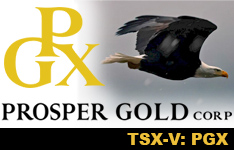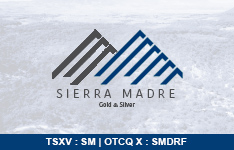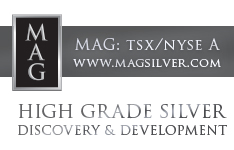Figma Inc. (FIG:NYSE) will begin Thursday, July 31, on the New York Stock Exchange under the ticker symbol FIG after a highly anticipated and upsized initial public offering (IPO).
"Investor demand for Figma has proven to be incredibly strong, with shares reportedly oversubscribed by more than 30 times," Greg Martin, managing director at Rainmaker Securities, told Kiplinger.
Bloomberg Intelligence Analyst Anurag Rana predicted that Figma's final IPO valuation will be between US$19.1 billion (US$19.1B) and US$23.2B in light of the company's growth prospects, reported Bloomberg on July 30.
Figma, which planned to sell about 37 million shares in the IPO, on July 28 raised the price to US$30–32 per share from its initial price on July 21 of US$25–28 per share, noted a news release. If the updated pricing holds, the IPO could value the company at US$17.6–18.8B.
Pre-IPO, the company's valuation was about US$12.5B in comparison, according to Tracxn, a market intelligence platform.
About three years ago, Adobe Inc. made a US$20B offer for Figma but bowed out after regulators in the United Kingdom and European Union raised antitrust concerns, Kiplinger's July 30 article noted.
Making Design Accessible to All
Figma Inc. is a San Francisco, Calif.-based design software company whose mission is to make design accessible to everyone, according to its website. Its artificial intelligence (AI)-powered, cloud-based platform, a subscription-as-a-service offering, allows users to turn ideas into digital products through collaborative brainstorming, designing, prototyping and building.
A number of the company's products, like Figma Make (AI-powered design generation) and Dev Mode (translation of design into code), elevate the platform beyond design tool status. Figma Sites allows users to publish websites directly from their Figma designs. FigJam, the virtual whiteboard product, extends the platform's capabilities to nondesigners.
Figma's most recent available financial results are the preliminary ones for Q2/25 ended June 30. Reported revenue was US$247–250 million (US$247–250M), implying 39–41% year-over-year growth, noted CNBC on July 21. Operating income was US$9–12M. Revenue in the previous quarter, Q1/25, was US$228.2M, and net income was US$44.9M, reported a July 29 AInvest article.
At the end of Q1/25, Figma had 13 million monthly active users and 11,100 enterprise customers, according to AInvest. About 95% of Fortune 500 companies were using Figma's platform.
Prior to its IPO, Figma raised a total of US$749M in funds over seven rounds, Tracxn reported. The last one, a Series F round, was on May 15, 2024 for US$416M. Sixteen investors participated in it, including Morgan Stanley, Kleiner Perkins and IVP.
Dylan Field and Evan Wallace, just two individuals wanting to bring collaborative design to the Internet, launched Figma in 2012. At the time of this article, the company employs about 1,400 people, noted Forbes, and has 230-plus active competitors, the Top 3 being Miro, Lucid and Klaxoon, according to Tracxn.
Sector Could See 12.1% CAGR
The global enterprise collaboration market is forecasted to grow at a 12.1% compound annual growth rate between this year and 2030, according to a market analysis report by Grand View Research. During this period, market value is projected to nearly double to US$107.03B from US$54.67B in 2024.
"The market is growing due to remote and hybrid work adoption, increasing demand for real-time communication, cloud-based collaboration, centralized project management, [and] AI and machine learning integration in platforms," Grand View explained.
The report pointed out that in terms of geography, the U.S. accounted for the largest market share in 2024, at 81%, due in large part to California being a major technology and innovation mecca. The sheer number of tech firms in Silicon Valley and the area's robust start-up ecosystem drive demand for advanced collaboration tools able to support users on-site and/or remotely. Beyond technology companies, organizations in the public and private sectors are adopting enterprise collaboration increasingly.
Investing in FIG for the Bold
Victor Hale's investment thesis on FIG is "a Buy for the bold, a Wait-and-See for the prudent," the self-described AI value stock bloodhound wrote in the July 29 AInvest article.
As for the positive, he pointed out, Figma's stock warrants a premium valuation given its financials, enterprise adoption and product innovation, but only if it can keep growing at its current rate. In terms of the negative, the risks of investing in FIG, which are competitive threats, AI disruption and macroeconomic headwinds, "cannot be ignored," he noted.
As such, for bold investors, he commented: "A small position in Figma could reward those who bet on its potential to redefine design workflows in the AI era." For more conservative investors, he suggested: "Monitor Figma's post-IPO performance, its ability to expand into adjacent tools (e.g., Figma Slides, FigJam) and its response to Adobe's AI push."
| Want to be the first to know about interesting Technology investment ideas? Sign up to receive the FREE Streetwise Reports' newsletter. | Subscribe |
Important Disclosures:
- Doresa Banning wrote this article for Streetwise Reports LLC and provides services to Streetwise Reports as an independent contractor.
- This article does not constitute investment advice and is not a solicitation for any investment. Streetwise Reports does not render general or specific investment advice and the information on Streetwise Reports should not be considered a recommendation to buy or sell any security. Each reader is encouraged to consult with his or her personal financial adviser and perform their own comprehensive investment research. By opening this page, each reader accepts and agrees to Streetwise Reports' terms of use and full legal disclaimer. Streetwise Reports does not endorse or recommend the business, products, services or securities of any company.
For additional disclosures, please click here.








































